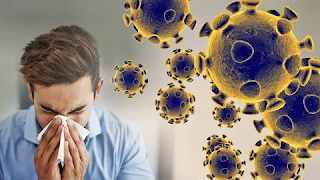Infectious diseases are caused by pathogenic microorganisms such as bacteria, viruses, fungi, or parasites. These diseases can spread directly or indirectly from one person to another, making them a significant public health concern. Effective management and prevention of infectious diseases require a comprehensive approach that includes early detection, appropriate treatment, and preventive measures.
The first step in dealing with infectious diseases
is early detection. Recognizing the symptoms of an infection and seeking
medical attention promptly can prevent the disease from spreading and becoming
more severe. Common symptoms of infectious diseases include fever, fatigue,
muscle aches, coughing, and gastrointestinal issues. Healthcare providers may
use various diagnostic tools, such as blood tests, urine tests, throat swabs,
and imaging scans, to identify the specific pathogen causing the illness. Early
diagnosis allows for timely and targeted treatment, which is crucial for
effective management.
Once an infectious disease is diagnosed,
appropriate treatment is essential. The type of treatment depends on the
pathogen involved. Bacterial infections are typically treated with antibiotics,
which target and kill the bacteria. It is important to complete the full course
of antibiotics as prescribed to ensure the infection is fully eradicated and to
prevent the development of antibiotic-resistant bacteria. Viral infections, on
the other hand, do not respond to antibiotics. Antiviral medications may be
prescribed for certain viral infections, such as influenza or HIV, to reduce
the severity and duration of symptoms. For fungal and parasitic infections,
antifungal and antiparasitic medications are used, respectively.
In addition to medical treatment, supportive care is
often necessary to manage symptoms and promote recovery. This may include rest,
hydration, and over-the-counter medications to relieve pain and fever. In
severe cases, hospitalization may be required to provide intravenous fluids,
oxygen therapy, or other intensive treatments.
Preventive measures are crucial in controlling the
spread of infectious diseases. Vaccination is one of the most effective ways to
prevent infections. Vaccines stimulate the immune system to recognize and fight
specific pathogens, providing immunity without causing the disease. Routine
vaccinations for diseases such as measles, mumps, rubella, and influenza are
essential for individual and public health. In addition to routine
vaccinations, staying up-to-date with recommended vaccines, such as the
COVID-19 vaccine, is important for preventing outbreaks and protecting
vulnerable populations.
Good hygiene practices are also vital in preventing
the spread of infectious diseases. Regular handwashing with soap and water,
especially before eating and after using the restroom, can significantly reduce
the transmission of pathogens. Using hand sanitizer when soap and water are not
available is a good alternative. Covering the mouth and nose with a tissue or
elbow when coughing or sneezing, and disposing of tissues properly, can prevent
the spread of respiratory infections. Avoiding close contact with sick
individuals and staying home when feeling unwell are important measures to
protect others.
Environmental hygiene plays a role in preventing infections
as well. Regular cleaning and disinfecting of surfaces, especially in
high-touch areas such as doorknobs, light switches, and countertops, can reduce
the presence of pathogens. Proper food handling and preparation, such as
washing fruits and vegetables, cooking meat to safe temperatures, and avoiding
cross-contamination, can prevent foodborne illnesses.
Public health measures are essential in managing
infectious disease outbreaks. These measures include surveillance to monitor
and track the spread of diseases, quarantine and isolation to prevent
transmission, and public education campaigns to inform the community about
preventive practices. During outbreaks, public health authorities may implement
travel restrictions, close schools or workplaces, and promote social distancing
to control the spread of the disease.
In conclusion, dealing with infectious diseases
requires a multifaceted approach that includes early detection, appropriate
treatment, and preventive measures. By recognizing symptoms early, seeking
medical attention, adhering to treatment plans, and practicing good hygiene,
individuals can effectively manage and prevent the spread of infectious
diseases. Public health measures and vaccination programs play a critical role
in protecting communities and ensuring overall health and well-being. Through
collective efforts, we can reduce the impact of infectious diseases and promote
a healthier future for all.

